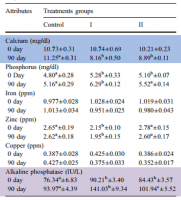Capers:LOL! The Phenol Explorer! That's real a cool website, but its not showing endive. And according the study you found, the endive has kaempferol in amounts much greater than those listed on the Phenol Explorer—which also ignores the stereotypical kaempferol‐containing berrry, the strawberry. And strawberries also have LSD.. .
View attachment 8187
.. .or a least significant difference of 6.2 between determinations.
Gil, Maria I. "Changes in strawberry anthocyanins and other polyphenols in response to carbon dioxide treatments." Journal of Agricultural and Food Chemistry (1997)
100mg/100g = 1mg/g = 1000 ug/g
Endives:
250mg/kg = 0.25 mg/g
No ?
Damn can I extract the lsd from strawberries? I can't imagine something more Peat approved, LSD from organic fruits. Strawberries are by far among my favourite fruits, maybe that's why, LSD, kaempferol, sugar, color, taste..price...
Last edited:



